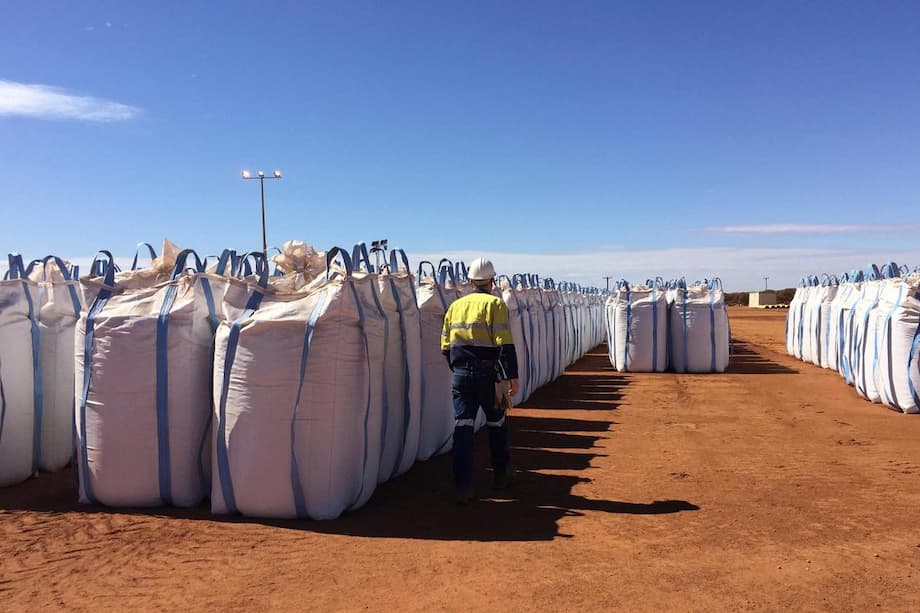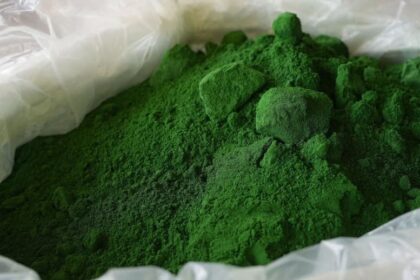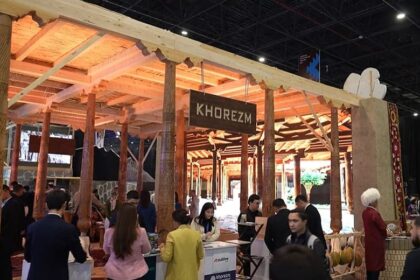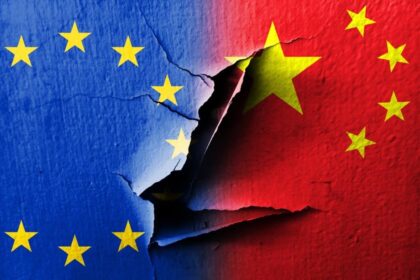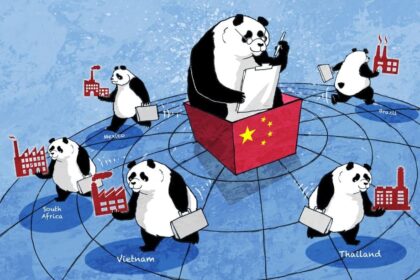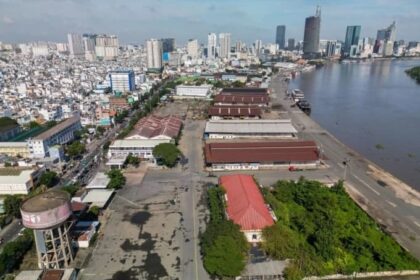China Offers Malaysia Technical Assistance in Rare Earths Processing, With State-Linked Conditions
Beijing signals willingness to share rare earth processing technology with Malaysia, but cooperation is limited to government-linked companies as both nations seek to capitalize on soaring global demand for critical minerals.
China has expressed readiness to provide Malaysia with technical and technological support for rare earths processing, according to official statements from both governments in late August 2025. The offer, conveyed by Chinese President Xi Jinping during his April visit to Kuala Lumpur, comes as Malaysia aims to develop its rare earth mining and processing industry to meet rising international demand for minerals essential to electronics, electric vehicles, and defense technologies. However, Beijing has stipulated that any cooperation must involve only Malaysian state-linked companies, reflecting China’s desire to safeguard its technological edge in this strategically vital sector.
- China Offers Malaysia Technical Assistance in Rare Earths Processing, With State-Linked Conditions
- Why Are Rare Earths So Important?
- China’s Offer: Strategic Support With Strings Attached
- Malaysia’s Rare Earth Potential and Policy Shifts
- The Role of Lynas and Non-Chinese Technology
- Geopolitical Context: China’s Carrot and Stick Strategy
- Economic and Environmental Stakes
- Global Supply Chains and the Race for Critical Minerals
- Challenges and the Road Ahead for Malaysia
- Key Points
Malaysia, which holds an estimated 16.1 million metric tons of rare earth deposits, is seeking to move up the value chain by processing these minerals domestically rather than exporting them in raw form. The government has already banned the export of unprocessed rare earths, allowing only processed materials to leave the country in an effort to prevent resource exploitation and maximize economic returns.
Discussions between the two countries remain in the early stages, with no formal agreement signed yet. Malaysian officials emphasize that China’s assistance is crucial, given its dominance in rare earth separation technology—a key bottleneck in the global supply chain.
Why Are Rare Earths So Important?
Rare earth elements (REEs) are a group of 17 metallic elements, including the 15 lanthanides plus scandium and yttrium. Despite their name, most are relatively abundant in the Earth’s crust, but they rarely occur in concentrated, mineable deposits. These elements are indispensable for manufacturing high-tech products such as:
- Semiconductor chips
- Electric vehicle motors
- Wind turbines
- Smartphones and computers
- Military equipment, including radar systems and advanced weaponry
China controls about 60 percent of global rare earth raw material production, processes roughly 85 percent of the world’s output, and manufactures nearly 90 percent of rare earth magnets. This dominance is not accidental—it is the result of decades of strategic investment, state subsidies, and relatively lax environmental regulations that have allowed China to undercut competitors and build a near-monopoly on the most complex processing steps.
Malaysia’s ambition to develop its own rare earth processing capabilities is driven by the desire to capture more value from its mineral resources and reduce dependence on foreign technology. The country’s National Mineral Industry Transformation Plan 2021-2030 outlines a vision for a “mine to magnet” ecosystem, aiming for 20 percent local participation in mine production and significant downstream manufacturing.
China’s Offer: Strategic Support With Strings Attached
During his April 2025 visit to Kuala Lumpur, President Xi Jinping signaled China’s willingness to help Malaysia develop rare earth processing technology. However, he made clear that any cooperation must be limited to government-linked companies, citing the need to protect sensitive technology. Malaysia’s Natural Resources and Environmental Sustainability Minister, Johari Abdul Ghani, described the offer as a “strategic development,” particularly since rare earth separation—the most technically challenging and valuable part of the supply chain—is an area where China is globally dominant.
Johari explained that China’s assistance could make Malaysia the only country outside China with both Chinese and non-Chinese rare earth processing technology, referencing the Australian-operated Lynas plant in Pahang as an example of non-Chinese expertise already present in the country.
“China’s assistance is crucial due to its dominance, especially in the separation of rare earth elements,” Johari told parliament. He added that discussions are still preliminary and that Malaysia will carefully consider its national interests before finalizing any agreement.
China’s insistence on working only with state-linked companies is seen as a way to maintain control over intellectual property and ensure that technology transfers align with Beijing’s broader industrial policy. This approach also allows China to coordinate commercial flows with policy objectives, ensuring that any new processing capacity does not undermine its own market position.
Malaysia’s Rare Earth Potential and Policy Shifts
Malaysia’s rare earth ambitions have grown in recent years, fueled by both economic opportunity and geopolitical shifts. The country’s Department of Mineral and Geoscience estimates that Malaysia holds over 16 million metric tons of rare earth deposits, valued at up to RM800 billion (about US$175 billion). These resources include significant quantities of neodymium, dysprosium, and praseodymium—elements critical for high-performance magnets used in electric vehicles and wind turbines.
To maximize returns and prevent resource exploitation, Malaysia imposed a moratorium on the export of unprocessed rare earths starting January 2024. Only processed materials can be exported, and mining is banned in permanent forests, environmentally sensitive areas, and protected reserves. The government’s goal is to encourage domestic processing and value-added manufacturing, potentially adding billions to GDP and creating thousands of jobs.
However, Malaysia faces several challenges:
- Lack of advanced processing technology and expertise
- Concerns over environmental and radioactive waste management
- Illegal mining and smuggling, which cost the government significant tax revenue
- Geopolitical tensions complicating partnerships with both China and Western countries
Currently, only one legal rare earth mining project operates in Malaysia, in Kenering, Perak, using in-situ leaching technology in collaboration with Chinese state-owned Chinalco. The commercial viability of this approach is still being evaluated.
The Role of Lynas and Non-Chinese Technology
Malaysia is already home to the world’s largest rare earth processing plant outside China, operated by Australia’s Lynas Rare Earths Ltd in Pahang. Lynas has produced rare earth oxides since 2012 and recently began commercial-scale production of heavy rare earths like dysprosium and terbium at its Malaysian facility. This development is significant because heavy rare earths are especially difficult to separate and are in high demand for advanced technologies.
In June 2025, Lynas signed a memorandum of understanding with the Kelantan state government to supply mixed rare earth carbonate feedstock to its Kuantan plant. The company’s new heavy rare earth separation circuit was successfully commissioned in the first quarter of 2025, marking Malaysia as a rare earths center of excellence outside China.
Despite these advances, Lynas has faced public protests and regulatory hurdles over radioactive waste generated during processing. The government has required Lynas to relocate certain processing steps outside Malaysia to renew its operating license, highlighting the environmental sensitivities surrounding the industry.
Malaysia’s ability to host both Chinese and non-Chinese processing technology could position it as a unique hub in the global rare earth supply chain, attracting investment from Japan, South Korea, and other countries seeking to diversify away from China.
Geopolitical Context: China’s Carrot and Stick Strategy
China’s offer to Malaysia is part of a broader geopolitical strategy that uses rare earths as both a carrot and a stick. Beijing has a history of leveraging its control over rare earths to reward friendly nations and pressure rivals. For example, in 2010, China halted rare earth exports to Japan during a territorial dispute, causing global price spikes and supply chain disruptions.
In recent years, China has tightened export controls on rare earth processing technologies and certain finished products, citing national security concerns. These restrictions have affected Western companies and prompted the United States, European Union, and Australia to seek alternative sources and invest in domestic processing capacity. However, replicating China’s scale and expertise is costly and time-consuming.
Malaysia’s willingness to work with China reflects a pragmatic approach to industrial development. By accepting Chinese technology under controlled conditions, Malaysia can accelerate its rare earth ambitions while maintaining a degree of independence. At the same time, the government is courting investment from Japan, South Korea, and Western partners to avoid overreliance on any single country.
Economic and Environmental Stakes
The economic stakes for Malaysia are high. The rare earth industry is expected to contribute up to US$2 billion to GDP in 2025, with the potential to create thousands of jobs. The government aims to develop a RM10 billion (about US$2.3 billion) rare earth industry by next year, according to Prime Minister Anwar Ibrahim.
However, the environmental costs of rare earth mining and processing are significant. Producing one ton of rare earths can generate large amounts of dust, wastewater, and radioactive residue. Malaysia has learned from past controversies, such as the protests against Lynas, and is now emphasizing strict environmental, social, and governance (ESG) standards. The National Mineral Industry Transformation Plan calls for sustainable development along the entire value chain, from mining to manufacturing advanced materials.
Illegal mining and smuggling remain persistent problems, with fines often too low to deter offenders. In 2023, illegal exports to China may have cost Malaysia over RM200 million in lost tax revenue. The government is considering industry-specific regulations and the creation of a national entity to oversee critical minerals, similar to Petronas in the oil and gas sector.
Global Supply Chains and the Race for Critical Minerals
The global race for rare earths is intensifying as countries seek to secure supplies for their high-tech industries and reduce dependence on China. The United States, for example, has resumed operations at the Mountain Pass mine in California and is investing in new magnet manufacturing facilities. The European Union is pursuing green tech partnerships and urban mining initiatives to diversify supply.
China’s dominance in rare earths is underpinned by its willingness to absorb low profits and maintain oversupply, making it difficult for competitors to gain market share. The Chinese government’s subsidies and industrial policy have fostered a surge in rare earth-related patents and technological advances, further entrenching its leadership.
Malaysia’s cooperation with China could serve as a template for other resource-rich countries, such as those in Africa, to develop their own midstream processing industries. By structuring joint ventures with state-linked entities and securing offtake agreements with major buyers, countries can capture more value and create jobs domestically.
Challenges and the Road Ahead for Malaysia
Malaysia’s rare earth ambitions face several hurdles:
- Securing technology transfers while protecting national interests
- Ensuring environmental and social sustainability
- Combating illegal mining and smuggling
- Navigating geopolitical tensions between China, the United States, and other partners
The government is working on a blueprint for the rare earth sector, aiming to boost onshore processing and value-added services. Industry observers say Malaysia’s success will depend on embedding sustainable practices, enforcing strict regulations, and attracting ESG-compliant technology partners.
As the global economy pivots toward electrification and green energy, rare earth elements will remain at the heart of innovation. Malaysia’s natural reserves and growing research ecosystem position it as a potential leader in the sector, provided it can balance economic, environmental, and geopolitical considerations.
Key Points
- China has offered Malaysia technical assistance in rare earth processing, but only for state-linked companies, to protect sensitive technology.
- Malaysia holds an estimated 16.1 million metric tons of rare earth deposits and has banned the export of unprocessed materials to encourage domestic processing.
- Discussions between Malaysia and China are ongoing, with no formal agreement yet; Malaysia also hosts the world’s largest non-Chinese rare earth processing plant, operated by Australia’s Lynas.
- Rare earths are critical for high-tech industries, and China dominates global production and processing, making technology transfer a strategic issue.
- Malaysia’s rare earth ambitions are shaped by economic opportunity, environmental concerns, and geopolitical competition between China, the US, and other partners.
- Strict environmental standards, combating illegal mining, and attracting ESG-compliant investment are key challenges for Malaysia’s rare earth sector.
- The outcome of Malaysia-China cooperation could influence global supply chains and serve as a model for other resource-rich nations.


